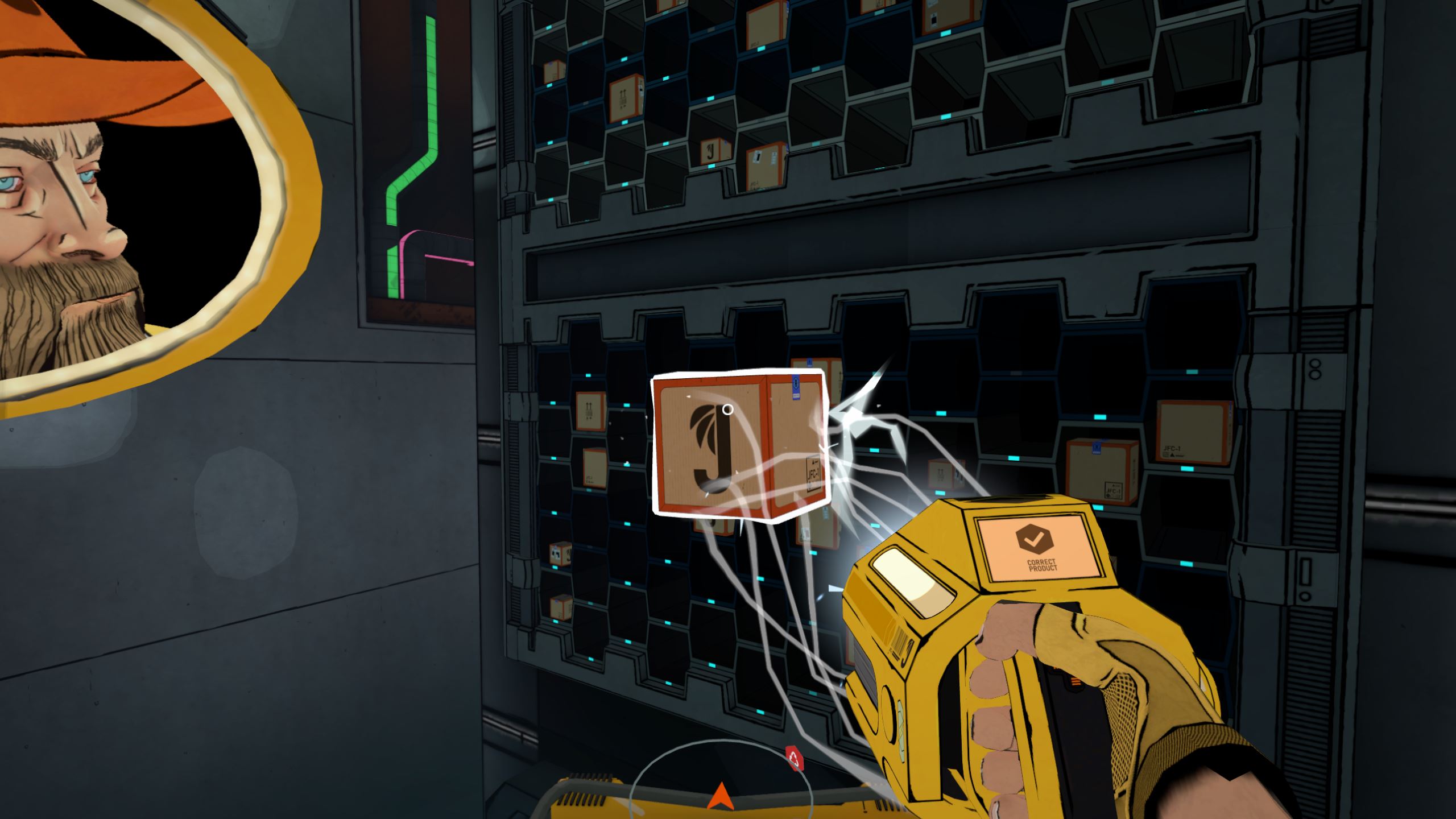
Apr
The Last Worker Review
Check out our review of The Last Worker to learn what we thought of this dark satire set in the dystopian, online-shopping-dominated future.
It’s become quite the meme that satire website The Onion should just shut down at this point, because it’s become so challenging to write satire in a world where telling reality apart from satire has becoming an impossible exercise. I was reminded of this thought when playing The Last Worker, a dark satire about being the last human worker at a warehouse that’s larger than Manhattan.

The Last Worker is a narrative adventure game in which you play as Kurt, the eponymous last worker at Jüngle, a company very closely modeled on the real-life Amazon. So much so, in fact, that the chief villain of the game, Mr Jüngle, is a spitting image of Amazon founder Jeff Bezos – albeit with a fringe of rainbow hair.
There’s no shortage of grievances against Amazon to mirror in art, and worker conditions at Amazon have been infamously well-documented. Amazon workers have been subjected to working conditions so inhumane that they have been prevented from taking bathroom breaks, leaving them forced to urinate in bottles.
Reports of dangerous and difficult working conditions abound, and it hasn’t helped that Amazon takes an oppositional position to labor unions. All of which comes around to Amazon being the perfect template for The Last Worker’s Jüngle, which is depicted as a dystopian megacorporation with its fingers in every pie and a complete disregard for humanity.

Kurt is the last worker at this megacorp, where all work is now handled by worker robots. His stellar work record hides a personal tragedy that’s covered very quickly in the opening cinematic. Kurt now lives alone in the junk-heap below the gargantuan ‘Jüngle Fulfillment Center – 1’. There, he spends his nights eating sausages and breathing toxic gas from the junk that comes his way. By day, of course, he navigates the Jüngle warehouses on his ‘pod’, a flying forklift that’s instrumental for his job and for him to get around both.
Kurt’s only companion, 25 years into his job, is ‘Skew’, a defective robot loaded with sarcasm and a very British accent. Days pass by one after the other, but Kurt’s life is transformed when he encounters a mysterious new robot in the fulfillment center. As this new robot’s goals become entangled with Kurt’s day-to-day work, Kurt is forced to once again decide whether to devote his life to the company or not.

For a company modeled after Amazon, there’s surprisingly little done to have us hate Jüngle. There are no managers or employees visible anywhere, and in fact, we have very little information about the world outside of JFC-1 and how Jüngle is affecting it.
Which makes sense – Kurt has been entirely content in JFC-1 for 25 years. It does, however, also leave us to conclude that Mr Jüngle entrusts his entire operation to robots. Kurt’s anomalous presence is explained in one of the endings of the game, but until then, you’re left to speculate.

Hints come through, but are mostly related by second-hand commentary. “Buy two world wars, get one free” and “Mr Jüngle has rainbow hair, how can he not be progressive” make for great quotes, but with the exception of one workplace incident, it seems the game intends for us to hate the big megacorporation as a given. There’s much tell, and very little show.
It also doesn’t help that the game takes a very cynical stance towards its anti-Jüngle faction. The game’s prescription for late stage capitalism isn’t working towards change, but rather, escaping it altogether – which is a luxury afforded here by narrative convenience.

A hollowness permeates throughout the game, whether it’s during the ‘shift’ sequences in which Kurt does his job, or the rest of the game in which Kurt must sneak around security robots and work against his employer. The former sequences are actually enjoyable, even if they intentionally seem unfair. The stealth sequences, on the other hand are quite passable.
Some design decisions are strange and perhaps the result of insufficient iteration. The Rubik’s-Cube-like timed puzzles, for instance, retain your solving progress between attempts, making the timers on them quite pointless and reducing the puzzle to padding for the game’s length.

All said and done, The Last Worker is neither particularly engaging to play, nor is it very insightful in its commentary on the world we are living in, and indeed, the world we are heading towards. The dev team has certainly cut its teeth though, and its debut production promises stronger showings in the future.
Developer: Oiffy, Wolf & Wood Interactive
Country of Origin: United Kingdom
Publisher: Wired Productions
Release Date: March 30, 2023 (PC, PS5, Xbox Series X/S, Switch, PSVR2, Meta Quest 2)
This review is based on a copy of the game provided by the publisher. The PC, flat-screen version of the game was played for this review of The Last Worker.
Thank you for reading this review of The Last Worker! For other interesting articles on Into Indie Games, check out the links below:
- Into Indie Games Homepage
- Best Indie Games of 2023
- Children of Silentown Review
- Review: The FIFINE Ampligame H6 USB Gaming RGB Headset for under $50
- The Last Worker Guide: Prologue and Chapter 1
- Why do people like Indie Games?
